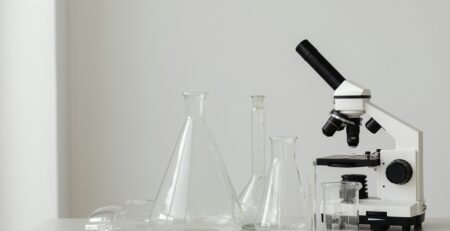4
Sep
Reagent Bottles: Amber vs Clear Glass and When to Use Each
Reagent bottles are essential for safe storage and handling of chemicals in laboratories. Made from borosilicate glass (BORO 3.3), they are designed to withstand thermal changes, chemical exposure, and repeated sterilisation. The choice between amber and clear glass bottles is critical for protecting reagents, ensuring stability, and maintaining compliance with laboratory standards.
Amber Glass Bottles: Protection from Light
Amber reagent bottles are specifically manufactured to shield light-sensitive chemicals.
- Block harmful UV and visible light, preventing degradation of photosensitive reagents.
- Commonly used for storage of organic solvents, light-sensitive pharmaceuticals, and analytical reagents.
- Comply with ISO and ASTM standards for chemical container performance.
- Available with ground glass stoppers or screw caps for secure sealing.
For laboratories handling compounds prone to photodegradation, amber bottles are the safest choice.
Clear Glass Bottles: Versatility and Clarity
Clear borosilicate glass bottles provide visibility, allowing users to inspect reagents without opening the container.
- Ideal for general-purpose chemical storage where light protection is not critical.
- Used extensively in educational labs, general research, and industrial settings.
- Excellent transparency for monitoring purity, colour changes, or sediment formation.
- Like amber bottles, they can be autoclaved and reused, supporting sustainable lab practices.
Clear bottles are often the preferred option where visual inspection is required before use.
Why Borosilicate Glass is the Standard
Whether amber or clear, BORO 3.3 reagent bottles offer:
- High chemical resistance to acids, alkalis, and solvents.
- Low thermal expansion, preventing cracking during heating/cooling.
- Reusability and long service life, reducing waste compared to single-use plastics.
Comparison Table: Amber vs Clear Glass Reagent Bottles
| Feature | Amber Glass Bottles | Clear Glass Bottles |
|---|---|---|
| Light Protection | Blocks UV and visible light | No protection, full transparency |
| Best Applications | Light-sensitive chemicals, pharmaceuticals | General reagents, teaching, visible checks |
| Visibility | Limited (dark tint) | High, allows direct observation |
| Sustainability | Reusable BORO 3.3 glass | Reusable BORO 3.3 glass |
| Standards Compliance | ISO & ASTM compliant | ISO & ASTM compliant |
FAQs
Q1: Do amber bottles completely block UV light?
Amber borosilicate glass blocks most UV and visible wavelengths but may not fully protect against extended UV-C exposure. For extreme sensitivity, additional shielding may be required.
Q2: Can clear bottles be used for light-sensitive reagents if stored in the dark?
Yes, but amber bottles are strongly recommended to minimise accidental light exposure during handling.
Q3: Are reagent bottles autoclave-safe?
Yes, borosilicate glass bottles (both amber and clear) can be sterilised in autoclaves without affecting their structural integrity.
Q4: What closure type is best for reagent bottles?
Ground glass stoppers provide traditional tight seals, while screw caps (often with PTFE liners) offer more convenience and chemical compatibility.
References
- ISO 4796-1: Laboratory Glassware — Bottles, Narrow Neck, for Liquids.
- ASTM E438: Standard Specification for Glasses in Laboratory Use.
- ISO 3585: Borosilicate Glass 3.3 — Material Properties.
- University of New South Wales Chemistry Laboratory Safety Notes.
- NIST Chemistry WebBook, National Institute of Standards and Technology.

